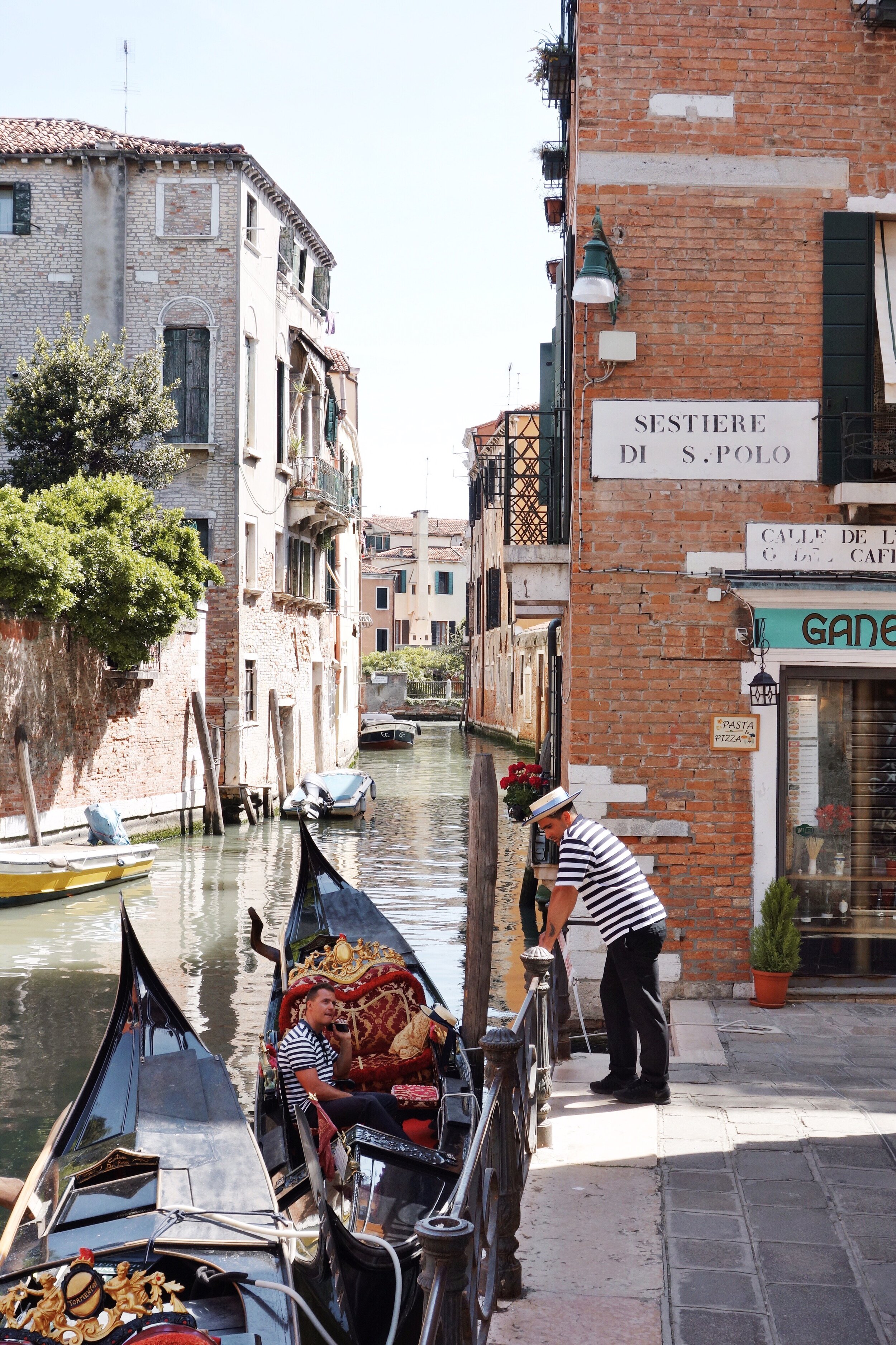Andiamo! We’re Revisiting Venice
Most seasoned travelers have floated down Venice’s famous canals. But with cruise ships in exile, tighter local restrictions and many tourists held back by the Coronavirus, the city feels decidedly different than it has in decades past. Not all of Venice’s problems are solved, but there’s change afoot, and you can feel it. So, we asked seasoned travel writer and author Adam Jacot de Boinod — who’s been to Venezia more times than he can count — to give us his take on Venice today.
Have you ever really been to Venice if you didn’t scarf down cicchetti and cheap Spritz from a hole in the wall?
At last, and how reassuringly, Venice is offering herself not at a price but for what she’s really worth. Mindless mass tourism may well have had its day, hopefully without any lasting damage.
For at the beginning of April this year Italian ministers decided that large cruise and container ships could no longer enter the Giudecca canal which leads to St Mark's Square. Also, the local police and civic units known as ‘angels of decorum,’ installed in 2017 to restore dignity to the city, are finally clamping down on the louts and litterbugs whose bad habits include feeding the pigeons and sunbathing in bikinis by San Stae church, picnicking on the steps of the portico surrounding St Mark’s Square, whizzing along the Grand Canal on a stand-up paddleboard or past Palazzo Cavalli on an electric scooter.
Officers have also been clamping down on illegal trading, confiscating bracelets, selfie sticks, luminous darts and roses, especially in the area of the train station, the Rialto Bridge and St Mark’s Square — the three main hubs of the mass tourists, the three vital links of the yellow-arrowed route along which they flock.
These are vital steps in the right direction. For my enjoyment of Venice demands room for sensual departure — no crowds and ideally to combine the central sites with the outer parishes, to contrast the cramp passageways often resulting in dead-ends with the wide walkable expanse of the quaysides and their exposure to the sea.
For it’s easy to get claustrophobic and so important to maintain a sense of the expansive lagoon. The joy is in the lack of combustion, save for the busying Vaporettos allowing for the unique quality of a city without permanent noise. The lapping ripples of the encroaching water, invasive at ‘aqua alta’ — high tide — reminds me of the ultimate fragility of the lagoon while the lulling of a ‘barcarola’ — gondolier's song — or a piano being played round any domestic corner is truly special.
No one writes about Venice more insightfully than Jan Morris in her book “The Stones of Venice” and no guidebook can better that of Mitchell Beazley. Here I learnt little eyebrow-raising snippets such as Michelangelo spending three years exiled on the Giudecca from 1529 as well as the abandoned island San Giorgio in Alga, once a radical monastery and then a political prison, being a secret Nazi base.
As for my tips: if you spot a green church door open seize the moment to look inside as often they are shut. Go up the bell tower at San Giorgio Maggiore for a panoramic view of the lagoon; it’s quicker and cheaper than St. Mark’s campanile. Here you can witness the many church towers evenly placed across the Giudecca seemingly incommunicado with each other and their lofty statues conversing with one another on an altogether higher plane.
And the Altanella on the nearby Giudecca is a real find, a lovely family-run fish restaurant amongst Venetians going about their daily lives, garrulous and gesticular. And take a Vaporetto in the evening up and down the Grand Canal for only then can one see the grand splendor of gilded ceilings and expansive rooms of the opulent palazzos. Truly transporting.








